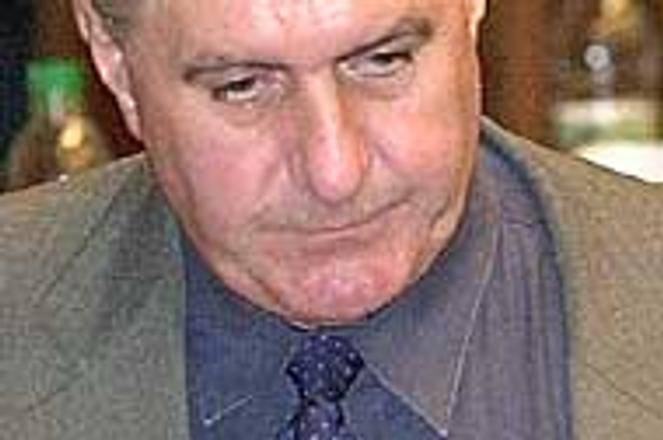SD1 LEADER Pavel Koncoš has staked his job on change.photo: TASR
THE FAILURE of the ruling coalition Democratic Left Party (SD1) to agree on a list of top candidates for upcoming September elections is further evidence that the once strong leftist party is preparing for a modest result in the fall ballot.
At a May 18 meeting of top SD1 brass, party leader Pavel Koncoš made it clear that he did not want to see many of SD1's current members of parliament (MP) back in the legislature after elections.
Koncoš proposed that few SD1 MPs would be placed in the top 14 positions on the party's 150-name list of candidates. The higher a candidate places on the list, the greater the likelihood of his or her election to parliament.
The move was interpreted as an attempt by the SD1 to improve a public image battered by the party's involvement in corruption scandals, its criticism of its government partners, and its apparent inability to enforce its left-wing platform in cabinet.
After attracting over 14 per cent support in September 1998 elections, the SD1 scored 2.1 per cent in an opinion poll released May 16 by the Public Opinion Research Institute (ÚVVM). To be eligible for seats in parliament, a party must attract at least five per cent support.
SD1 MP Milan Ištván disapproved of his boss's determination to keep all but a few of the party's current 18 MPs atop the candidates list.
Expecting to be placed "somewhere way down on the list", Ištván said: "I'm thinking about leaving top politics and instead working for the party at the municipal level."
His colleague, Vladimír Faie, added: "It's not wise to take such a stance against a whole group of people. They do as much work for the party as those who now make these decisions."
Koncoš, however, said he would stick by his plan even if it meant facing a non-confidence vote at the party's nomination meeting on June 8.
He said that "age, qualification and their activities in politics" would be top priorities when deciding on the final lineup, and highlighted SD1 members such as Finance Minister František Hajnovie, Education Minister Peter Ponický, and Deputy Prime Minister for Legislation 1ubomír Fogaš as models of what he was looking for.
Koncoš also pledged that the list would "include a minimum of three women among the top 10 candidates, because this state can't be managed without mothers."
Koncoš's promise to offer one place each to members from the tiny SOP and SDSS leftist parties among the first eight on the candidates list came as a surprise to some observers because of his earlier criticism of both parties' leaders.
Ištván, however, said the move was logical because "the SD1 for years has been trying to integrate the left".
However, due in part to heavy-handed rule by SD1 leaders Koncoš and his predecessor, Jozef Migaš, the SD1 has lost some of its most popular and credible politicians, many of whom defected earlier this year to form the Social Democratic Alternative (SDA).
SDA founders Milan Ftáenik and Peter Weiss have said they will run independently for election and aimed to build a "modern left-wing party". The SDA scored 4.4 per cent in the ÚVVM poll.
On the other side of the legislature, Jozef Kalman, a former senior member of the opposition Movement for a Democratic Slovakia (HZDS), recently cut ties with the HZDS to form a grouping called the Left Bloc (1B). Political analysts have speculated that the Bloc was intended to further fragment the Slovak left wing and thus improve the election chances of large parties such as the front-running HZDS.
Finally, the orthodox socialist SD1 has been outflanked by the Smer party of former SD1 member Robert Fico, which is in second place in the polls with 16 per cent support.
Fico's 'third road' political programme emulates the move made from left to centre by Germany's leftist leader Gerhard Schröder and Britian's Tony Blair, a strategy which has made Fico highly popular among young voters.
"At the moment Smer is the only [leftist] party which can rely on getting into parliament," said Grigorij Mesežnikov, head of the Institute for Public Affairs think tank.
While the analyst said he could understand Koncoš's desire to remake the SD1's public image and circle the wagons by hosting SOP and SDSS candidates, "this is more an attempt to secure the political survival of a select group of people, and I'm very skeptical of its effectiveness".


